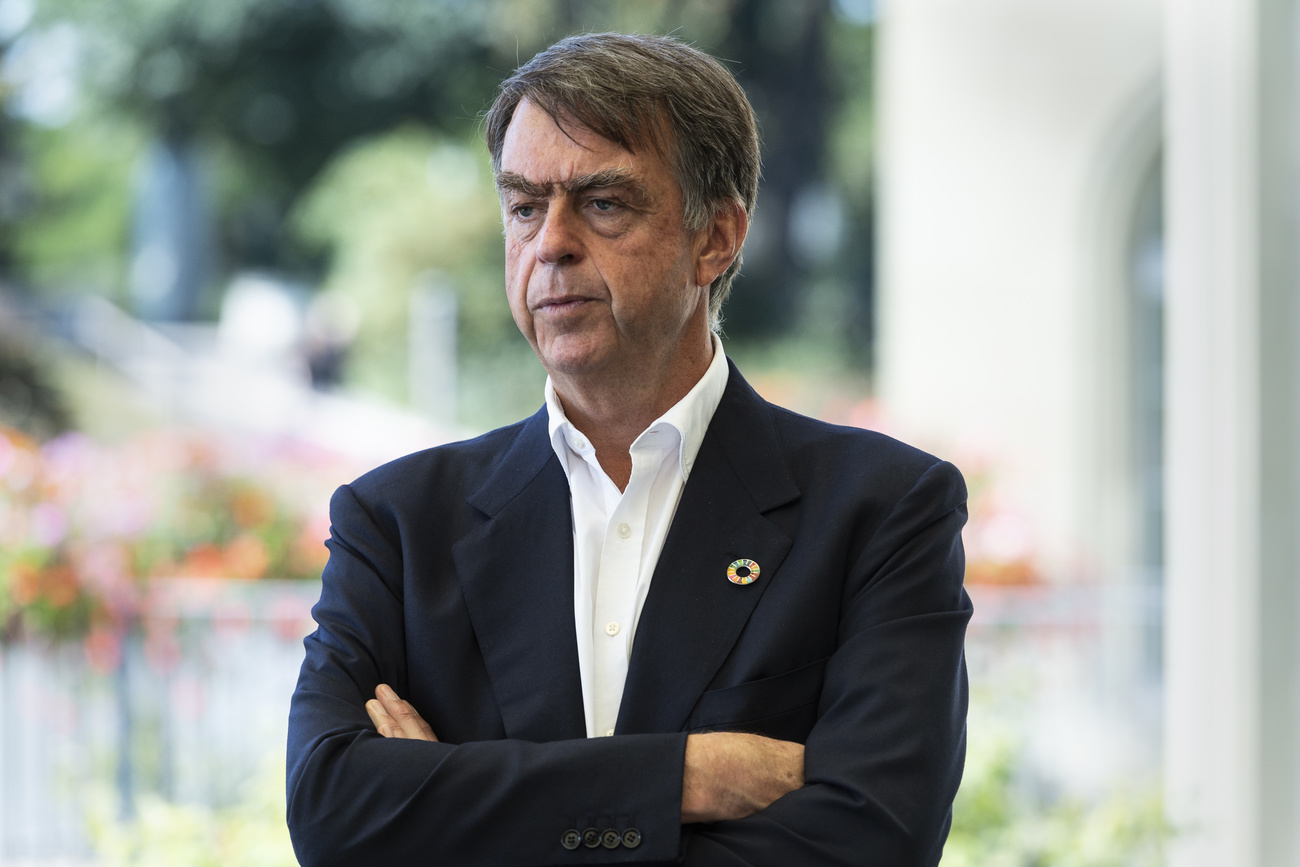Photographer’s “cold eye” captures real life

From the excesses of the Rolling Stones to the reality of everyday America, Swiss-born photographer Robert Frank has inspired a cult following over the years.
An exhibition of works by the award-winning photographer and filmmaker, who turned 80 this month, is currently on show at the Tate Modern in London.
Born in Zurich, Frank learned his craft alongside Swiss photographers and filmmakers in the northern Swiss city before moving to New York in 1947.
“I was 23 when I came [to the United States] but I knew nothing of the world,” he told Britain’s “Observer” newspaper in a rare interview at the Bleeker Street studio he shares with his second wife, artist June Leaf.
Leaf’s works are currently on display for the first time in Europe at the Tinguely Museum, Basel.
After arriving in New York, Frank fell in with the beat generation and was friendly with literary figures, Jack Kerouac and Allen Ginsberg.
During his early days, he freelanced briefly for women’s magazines. But he says he grew tired of the romanticism of the photographs. “I wanted to present what I saw, pure and simple.”
So he travelled through Peru and Bolivia, pointing his Leica at peasants in the detached style that would mark his best-known work. In the early 1950s he published his third book of photos, called “London-Wales”.
“I think I always had a cold eye,” he said of the stark realism that has characterised his photographs. “But it’s also easier to show the darkness than the joy in life.”
The Americans
In 1955 the Guggenheim Foundation commissioned him to capture American life.
He shot more than 28,000 images, 83 of which went into his book, “The Americans”, published in 1959, with an introduction by his friend, Kerouac.
He wrote: “Robert Frank, Swiss, unobtrusive, nice, with that little camera that he raises and snaps with one hand he sucked a sad poem right out of America onto film, taking rank among the tragic poets of the world.”
Frank himself said he intended to portray the US “through the eyes of a new American”, but the book briefly thrust the reclusive photographer into the spotlight when some critics branded it anti-American.
In a 1969 review of the book, John Szarkowski, curator of New York’s Museum of Modern Art, wrote that lonely and restless images leapt off the pages.
“It’s difficult to remember how shocking Robert Frank’s work really was. The pictures took us by ambush,” he said.
The New York Institute for Photography described Frank as “a fly on the wall” in the most public and private places.
“Going against the tide of perfectly focused and lit images, Frank’s photos are grainy, sometimes blurred.”
The Stones
Frank took to filmmaking in the 1960s, a time also marked by divorce from his first wife, Mary Lockspeiser, mother of his son Paolo.
The Rolling Stones hired the filmmaker but later tried to suppress the result, which he called, “Cocksucker Blues”.
It was the Stones at their most decadent – sex with groupies in private jets, cocaine parties, and even a masturbation scene in which frontman Mick Jagger revealed himself to the photographer in a reflected image.
“They sent lawyers, they sent planes, they sent the sheriff. It was out of proportion like everything they did,” Frank told the Observer.
His professional evolution didn’t stop at filmmaking. There was a new blend of techniques in his photography – negatives over images, writing in the margins and over the photographs.
Emotion
And something else had changed. Frank says his films and photographs became more emotional after his daughter Andrea died in a plane crash in Guatemala in 1974, aged 20.
“It shifted from being about what I saw to being about what I felt.”
In 1994 Robert Frank became the first photographer to be granted a retrospective by Washington’s National Gallery while still alive.
His influence on post-war photography was recognised with the Hasselblad Award in 1996.
Over the years, Frank has maintained his ties with Switzerland. He has given the Swiss Photography Foundation 80 works in the past nine years.
In 1976 and 1995, the Zurich Kunsthaus staged major retrospectives of Frank’s work, including a vast collection the photographer had earlier donated to Washington’s National Gallery.
The Tate exhibition, entitled “Robert Frank: Storylines”, features work from throughout his career, including a never-seen series of photographs he called, “Stories 2002”.
swissinfo, Elizabeth Meen
The work of photographer and film-maker Robert Frank, who grew up in Zurich, is the subject of an exhibition at the Tate Modern in London until January 23, 2005.
In 1994 Frank became the first photographer to be granted a retrospective by Washington’s National Gallery while still alive.
His influence on post-war photography was recognised with the Hasselblad Award in 1996.
Frank, who now lives in New York, is known for the gritty power of his films and photographs shot all over the world over the past 50 years.
The Photography Foundation of Switzerland received donations by Frank of 42 works in 1995, 13 works in 1999, and 25 works in 2003.
The Zurich Kunsthaus has staged two retrospectives of his work.

In compliance with the JTI standards
More: SWI swissinfo.ch certified by the Journalism Trust Initiative










You can find an overview of ongoing debates with our journalists here . Please join us!
If you want to start a conversation about a topic raised in this article or want to report factual errors, email us at english@swissinfo.ch.